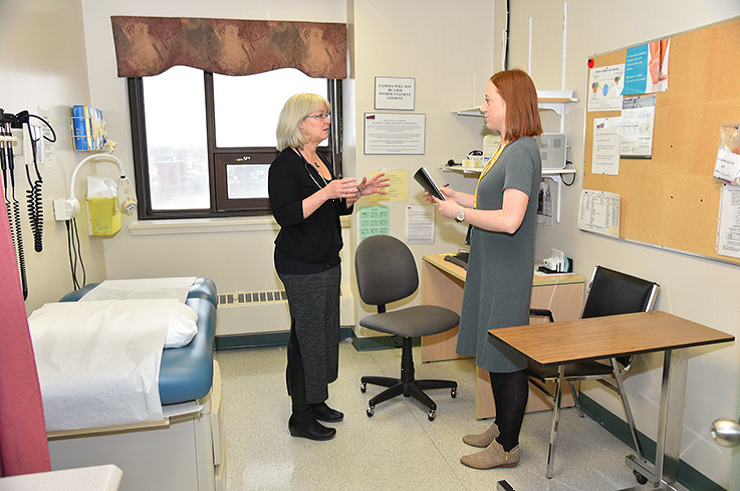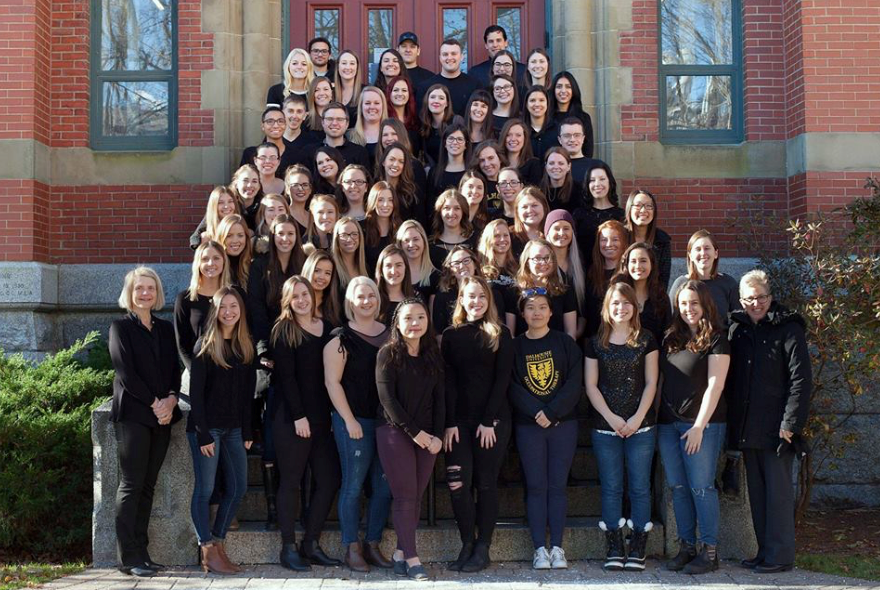About Occupational Therapy
.png)
Occupational therapists use their understanding of health, occupations and environments to guide assessments and recommend interventions that enable individuals, organizations, and communities to overcome obstacles that limit their ability to do things they need and want to do. Obstacles may be related to characteristics of the person, like illness, injury, physical or mental disability, environmental characteristics like social disadvantage, cultural differences, or physical barriers in the home, community or workplace, or characteristics of the activity itself.
.png)
The role of an occupational therapist is varied and challenging. Occupational therapy interventions for clients are never the same because no two people or environments are ever exactly the same. The challenge of occupational therapy is to plan and implement the “just right” program or strategy for each client so that everyone can achieve an optimal level of participation in meaningful daily activities.
(Photo Credit: Jennifer Armstrong, MUN, 2019)

(Photo credit: Jennifer Armstrong - MUN, 2019)
Occupational therapists can work in a wide range of public, private and voluntary sector settings including:
- Home and community:
- individual homes, primary health care clinics, community health clinics, community mental health centres, group homes, vocational programs, community actions groups, not-for-profit organisations, and workers compensation boards
- Health and education facilities:
- hospitals, long term care facilities, rehabilitation centres, mental health centres, correctional institutions, recreation centres, schools, universities and colleges, and research centres
- Industry and business:
- private practices, corporations, rehabilitation companies, insurance companies and architectural firms
- Government:
- All levels of government advising on policy in the areas of “program development”, health promotion, public health, disability prevention/management, accessibility, inclusion, vocational /health planning and international rehabilitation program development.
Source: CAOT, 2016
Occupational therapists receive a broad education in the health, psychosocial and occupational sciences which equips them with the attitudes, skills and knowledge to work collaboratively with people- individually, in groups, or in communities.
Education in Occupational Therapy can be obtained in Canada and internationally.
In Canada, the minimum education requirements for entry-level occupational therapy education is a graduate/Master of Science degree in Occupational Therapy following completion of any undergraduate degree. Within the graduate program, OT students complete a minimum of 1000 hours of supervised fieldwork experience (on-the-job training) as part of their education.
There are 14 schools in Canada that offer Occupational Therapy Master of Science programs . Each school has their own application process, pre-requisite courses, dates and deadlines for application. For more information about these Canadian programs, go to Canadian Occupational Therapy University Programs or Canadian Association of Occupational Therapists (CAOT).
Occupational therapy is not offered as a program of study in the province of Newfoundland and Labrador. The Government of Newfoundland and Labrador instead has a seat purchase arrangement with the School of Occupational Therapy at Dalhousie University, the only OT education program in Atlantic Canada, for students who are residents of Newfoundland and Labrador.
Applicants seeking admission to the MSc (OT) entry level program at Dalhousie University must have completed an undergraduate degree and several pre-requisite courses. View more information here regarding applications and pre-requisites for the MSc (OT) program at Dalhousie University.
For students who wish to study OT internationally and plan to return to Canada to work, it is important to be aware that additional processes are required following graduation. View the steps involved here.

(OT Class of 2018, Dalhousie University)
Students are advised to check directly with the universities to which they plan to apply to ensure that their prerequisite course selection is appropriate and transferable for credit. As universities change their admission requirements from time to time, it is important to consult the websites of the universities to which you plan to apply to keep current on the admission requirements.